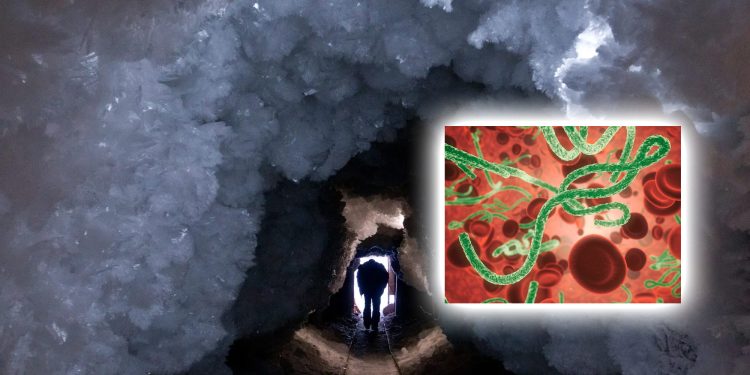Just like the plot of a horror movie, scientists have revived ancient “zombie” viruses from permafrost and have discovered that they can still infect living unicellular amoebas. While the chances of these viruses infecting animals or humans are not clear, researchers warn that they should be considered a public health threat.
Permafrost, which used to be a layer of soil that remained frozen all year round, covering 15% of the Northern Hemisphere’s landmass, is now thawing rapidly due to the effects of climate change. This phenomenon is unearthing a treasure trove of ancient relics, ranging from viruses and bacteria to woolly mammoths and cave bears, that have been frozen in time for millennia. According to CNN, Professor Jean-Michel Claverie from France discovered strains of frozen viruses that were 48,000 years old in some permafrost sites in Siberia. The oldest strain was retrieved from a soil sample from an underground lake and dated back to 48,500 years, while the younger ones were 27,000 years old. One of the more recent samples was found inside the body of a woolly mammoth.
Scientists are raising concerns about the impact of global warming on the melting permafrost in the Arctic, which could potentially release ancient viruses that have remained dormant for thousands of years. This presents a threat to living organisms, including humans, as they may not have immunity to these viruses. Birgitta Evengård, an emeritus professor at Umea University, has emphasized the close interaction between the microbiological environment and our immune system. Evengård warns that exposure to these ancient viruses could lead to devastating consequences.
“If there is a virus hidden in permafrost with which we have not been in contact for thousands of years, our immune defense may not be sufficient. Therefore, it is right to have respect for the situation and be proactive, not just reactive. And the way to combat fear is to have knowledge,” Claverie Evengård.
Claverie has been studying ancient viruses, or “zombie viruses” as he refers to them, for several years. This is not his first time bringing them back to life. Claverie has been researching this area since 2014, and he claims that only a few scientists are taking these viruses seriously besides his work. In their latest publication in the journal Viruses on February 18, Claverie and his colleagues argue that the belief that such instances are uncommon and that “zombie viruses” are not a public health risk is incorrect.
In their research, Claverie and his team describe how they successfully revived multiple new strains of zombie viruses capable of infecting cultivated amoebas. Claverie notes that this accomplishment is both a scientific curiosity and a cause for concern regarding public health. “We see these viruses that infect amoebas as substitutes for all other possible viruses that could be in permafrost,” he explained. “We see the traces of many, many, many other viruses. So we know they’re there. We don’t know for sure if they’re still alive. But our reasoning is that if the amoeba viruses are still alive, there is no reason why the other viruses will not still be alive and able to infect their own hosts.”
The study of frozen viruses like Claverie’s “zombie” virus provides valuable insights into the functioning of ancient viruses and their potential to infect animals and humans. However, it’s not just viruses that are a concern. With the thawing of permafrost, ancient bacteria that have been dormant for up to two million years could also be released and revived. This is believed to be what happened during the anthrax outbreaks that affected humans and reindeer in Siberia in 2016, which poses a more pressing public health issue, as stated in Claverie’s article.
PLEASE READ: Have something to add? Visit Curiosmos on Facebook. Join the discussion in our mobile Telegram group. Also, follow us on Google News. Interesting in history, mysteries, and more? Visit Ancient Library’s Telegram group and become part of an exclusive group.











